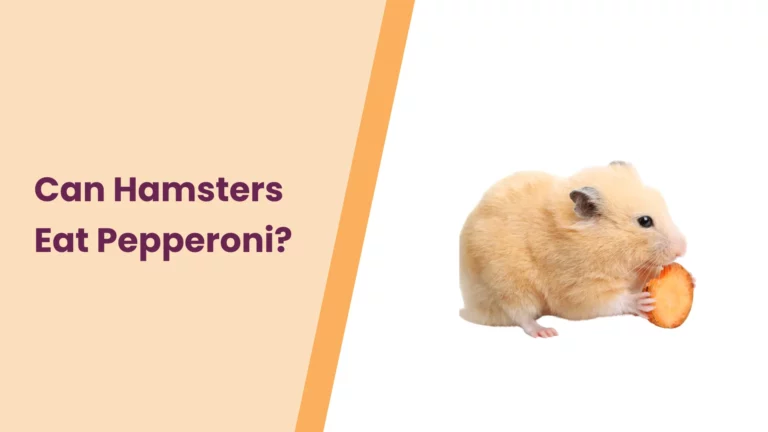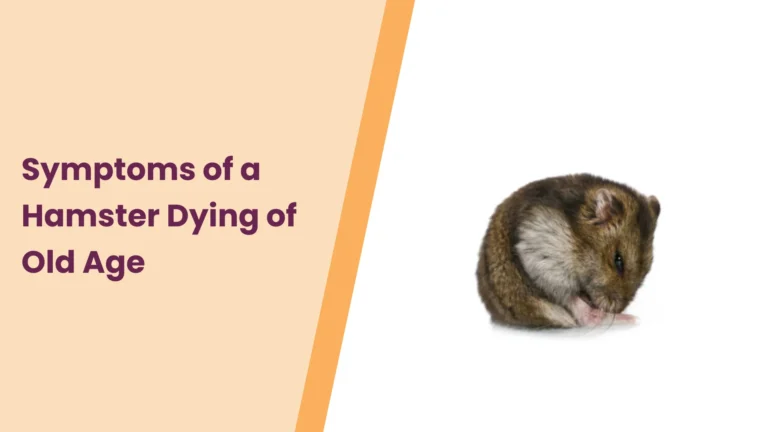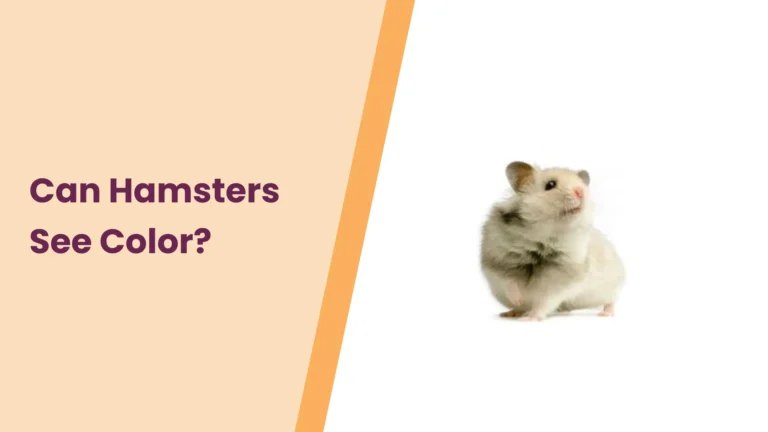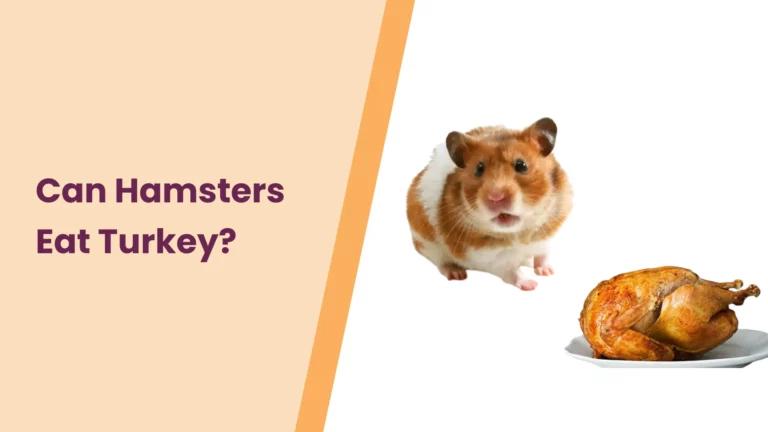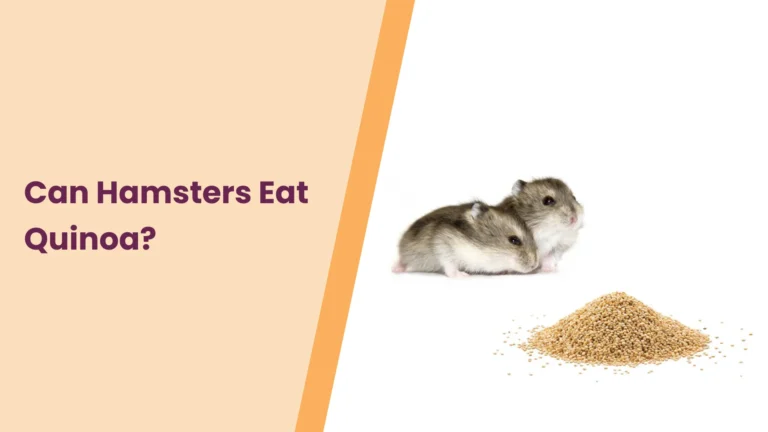How Long Is A Hamsters Memory Span? Unlock The Mystery
Welcome to the intriguing world of hamster care, where those adorable, tiny furballs capture our hearts with their playful antics and inquisitive nature. As devoted hamster enthusiasts, we often find ourselves pondering the depths of our pets’ intelligence, particularly when it comes to their memory span. Have you ever wondered just how long those little minds retain the moments of joy, the paths of mazes conquered, or the taste of their favorite treats? In this exploration of hamster memory, we delve into the fascinating world of these pint-sized companions, shedding light on the mysteries that lie within their tiny, whiskered heads.
Join us on a journey through research, practical tips, and the delightful quirks that make hamsters not just pets but cherished members of our households. Let’s unravel the secrets and embrace the wonder of hamster memories together.
Understanding Hamster Memory: Exploring the Intricacies of Tiny Minds
Hamsters, those pocket-sized bundles of fur, bring immeasurable joy into our lives. As we marvel at their nightly adventures on their exercise wheels and witness their clever escapades, it’s only natural to wonder about the workings of their minds, particularly their memory capabilities.
Contrary to popular belief, hamsters possess a surprisingly sharp memory. These small rodents exhibit an innate curiosity and intelligence that goes beyond their size. While their brains may not be as complex as larger pets, hamsters are adept at recalling experiences, recognizing familiar scents, and learning from their surroundings.
The hippocampus, a region in the brain associated with memory, plays a crucial role in a hamster’s ability to remember and navigate its environment. This small but mighty organ contributes to both short-term and long-term memory, enabling hamsters to remember the location of their favorite hideouts, the taste of preferred treats, and even the distinct scent of their human caregivers.
Every interaction, from hand-feeding to rearranging their living space, becomes a part of their memory bank. This memory recall is not just a matter of survival; it’s an essential aspect of their rich and dynamic lives. As we embark on this journey to unravel the mysteries of hamster memory, we’ll delve into the factors that influence their cognitive abilities, providing you with insights to foster a deeper connection with your furry friend. Let’s unlock the secrets of the tiny minds that bring so much delight into our homes.
Factors Affecting Memory Span: Nurturing the Recall Abilities of Your Furry Friend
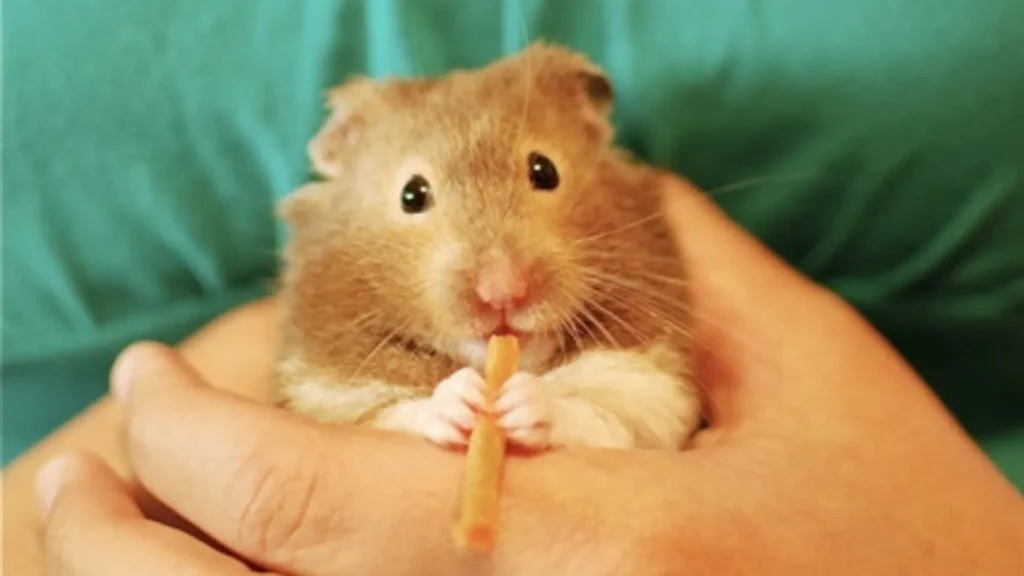
As we cherish the delightful moments spent with our hamster companions, it’s essential to understand the various factors that influence the duration and strength of their memory. Hamsters, like any living beings, are unique individuals, and their memory span can be shaped by a combination of factors.
1. Breed Differences:
Different hamster breeds may exhibit variations in memory capabilities. For instance, the Syrian hamster, known for its solitary nature, might showcase different memory behaviors compared to the social Dwarf hamster. While these differences aren’t absolute, they highlight the importance of recognizing and catering to your hamster’s specific needs.
2. Age Matters:
Just like us, hamsters may experience changes in memory as they age. Young hamsters are often more curious and energetic, displaying a keen interest in exploring their surroundings. As they mature, their memory becomes a repository of experiences, shaping their reactions to familiar stimuli. Providing mental stimulation becomes crucial, especially for older hamsters, to keep their minds active and engaged.
3. Health and Well-being:
A healthy hamster is likely to have better cognitive function. Health issues, stress, or discomfort can impact their memory span. Regular veterinary check-ups, a balanced diet, and a clean living environment contribute not only to physical well-being but also play a role in maintaining optimal cognitive function.
4. Environmental Stimulation:
The richness of a hamster’s environment plays a pivotal role in memory development. Regular changes in cage layout, introducing new toys, and providing opportunities for exploration all contribute to mental stimulation. Hamsters thrive in environments that encourage natural behaviors, helping to keep their memory faculties sharp.
By understanding these factors, we can create an environment that nurtures our hamster’s memory abilities. Whether it’s introducing new experiences or ensuring a healthy lifestyle, our efforts contribute to the overall well-being of our furry friends. In the next sections, we’ll delve into the intriguing realm of short-term and long-term memory, offering insights into the cognitive world of these captivating creatures. Let’s continue our exploration into the intricate tapestry of hamster memory together.
Short-Term vs. Long-Term Memory: Unraveling the Tapestry of Hamster Cognition
In the realm of hamster memory, understanding the distinctions between short-term and long-term memory provides a fascinating glimpse into the cognitive intricacies of our pint-sized companions.
1. Short-Term Memory:
Hamsters exhibit a remarkable ability to retain information in the short term. This becomes evident in their daily routines, where they quickly learn to navigate their cage, identify food sources, and recognize familiar scents. The fleeting moments of interaction, such as offering a treat or a gentle pat, are etched into their short-term memory, contributing to their overall awareness of the immediate environment.
2. Long-Term Memory:
Long-term memory in hamsters involves the retention of information over a more extended period. This can encompass a range of experiences, from the layout of their living space to the faces and scents of their human caregivers. Notably, hamsters can remember positive or negative associations, shaping their behaviors based on past encounters. For instance, they may recall the joy of receiving a treat or the caution associated with a particular noise.
Understanding the interplay between short-term and long-term memory sheds light on how hamsters adapt to their surroundings. Enriching their environment with a variety of stimuli not only engages their short-term memory but also contributes to the formation of lasting impressions. This delicate balance creates a tapestry of experiences that shapes their unique personalities and responses to the world around them.
As devoted hamster enthusiasts, we have the privilege of witnessing these memory dynamics in action. In the upcoming sections, we’ll explore studies on hamster memory, offering a deeper dive into the scientific insights that complement our everyday observations. Join us as we unravel the threads of hamster cognition and embrace the wonders of both the fleeting and enduring memories that make our furry friends such cherished companions.
Studies on Hamster Memory: A Peek into the Scientific Insights
While our daily interactions with hamsters provide a wealth of anecdotal evidence about their memory capabilities, delving into scientific studies allows us to uncover more nuanced aspects of these tiny creatures’ cognitive abilities.
1. Spatial Memory and the Hippocampus:
Research has spotlighted the role of the hippocampus, a region in the hamster brain associated with spatial memory. Studies indicate that hamsters showcase impressive spatial learning, remembering the layout of their environment and efficiently navigating mazes. This spatial memory is not only a testament to their intelligence but also a survival skill in the wild.
2. Associative Learning:
Hamsters exhibit a keen ability for associative learning, forming connections between stimuli and outcomes. Scientific experiments have demonstrated their capacity to remember and respond to specific cues, whether it be the anticipation of a reward or a learned avoidance behavior. These findings underscore the complexity of hamster memory and its adaptive nature.
3. Impact of Environmental Enrichment:
Studies emphasize the significance of environmental enrichment in influencing hamster memory. An enriched environment, comprising varied stimuli, promotes cognitive stimulation and enhances memory retention. This insight reinforces the importance of providing a dynamic living space for our hamster friends, filled with tunnels, hiding spots, and engaging toys.
As we peer into these scientific investigations, we gain a deeper appreciation for the cognitive prowess of hamsters. Our role as caregivers extends beyond daily interactions; it involves creating an environment that nurtures their innate abilities. In the subsequent sections, we’ll explore practical tips for training and enriching your hamster’s memory, ensuring that every moment spent together contributes to a vibrant and intellectually stimulating life. Join us as we bridge the gap between scientific findings and the everyday joys of hamster companionship.
Training and Enrichment: Cultivating Your Hamster’s Brilliant Mind
Beyond the adorable whiskers and furry paws lies a hamster’s brilliant mind, ready to absorb new experiences and showcase its cognitive prowess. Training and enrichment play pivotal roles in unlocking the full potential of your hamster’s memory and intelligence.
1. Positive Reinforcement Techniques:
Embrace the power of positive reinforcement when training your hamster. These tiny companions respond well to rewards, such as favorite treats, for desired behaviors. Whether it’s mastering a trick, navigating an obstacle course, or simply approaching your hand, associating positive experiences with learning fosters a deeper connection and encourages your hamster to engage in mental exercises.
2. Interactive Toys for Cognitive Stimulation:
Introduce a variety of interactive toys into your hamster’s living space. Puzzle feeders, tunnels, and climbing structures provide mental stimulation and engage their natural instincts. Not only do these toys enhance memory by offering novel experiences, but they also promote physical activity, contributing to overall well-being.
3. Rotate and Refresh the Environment:
Keep your hamster’s living space dynamic by regularly rotating toys and rearranging the layout. This prevents boredom, stimulates curiosity, and challenges their memory. A fresh and ever-changing environment encourages exploration and ensures that each day brings new opportunities for mental engagement.
4. Training Sessions with Patience:
Hamsters, like any learners, benefit from consistent and patient training sessions. Keep sessions short and enjoyable, gradually building on learned behaviors. Recognize and celebrate even small achievements, creating a positive and encouraging atmosphere that fosters a trusting relationship between you and your hamster.
By incorporating these training and enrichment practices into your routine, you’re not just teaching tricks; you’re actively contributing to the mental well-being of your hamster. The joy of witnessing your hamster master a new skill or exhibit problem-solving abilities is immeasurable, creating shared moments that strengthen the bond between caregiver and pet.
As we navigate the exciting landscape of hamster care, the upcoming sections will address common misconceptions about hamster memory and provide practical tips for memory care. Join us in the journey of nurturing the vibrant minds of our small, furry companions, and let’s create a world where every hamster thrives in an environment that celebrates their intelligence and individuality.
Common Misconceptions: Dispelling Myths about Hamster Memory
Hamsters, with their endearing antics and tiny paws, often find a place in our hearts. However, there are some persistent misconceptions about their memory capabilities that deserve clarification. Let’s unravel the truths and dispel the myths surrounding hamster memory.
1. “Hamsters Have Poor Memory”:
Contrary to the belief that hamsters have fleeting memories, these small rodents exhibit impressive cognitive abilities. Scientific studies highlight their capacity for spatial and associative learning, emphasizing that hamsters are far from forgetful. Understanding and appreciating the intricacies of their memory functions enriches our relationship with these intelligent companions.
2. “Hamsters Can’t Learn Tricks”:
Some may underestimate the trainable nature of hamsters. While they may not perform elaborate tricks like larger pets, hamsters are quick learners, especially when motivated by positive reinforcement. Simple commands, obstacle courses, and interactive activities showcase their aptitude for learning and adapting to new challenges.
3. “Hamsters Don’t Recognize Their Owners”:
Hamsters may be small, but their ability to recognize their human caregivers is remarkable. Through consistent interactions, hand-feeding, and gentle handling, hamsters form positive associations and become familiar with the scent and presence of their owners. Building trust and bonding over time strengthens this recognition.
4. “Older Hamsters Can’t Learn New Things”:
Age does not diminish a hamster’s capacity to learn. In fact, mental stimulation becomes increasingly important for older hamsters. Engaging in training sessions and providing enrichment activities contributes to their overall cognitive well-being, ensuring that they continue to thrive in their golden years.
Dispelling these misconceptions opens the door to a deeper understanding of our hamster companions. By acknowledging their intelligence and memory capabilities, we can create enriching environments that cater to their unique needs. In the following sections, we’ll delve into practical tips for memory care, empowering you to enhance your hamster’s cognitive abilities and create a fulfilling and harmonious life together. Join us as we celebrate the brilliance of hamster minds and challenge the myths that may have clouded our appreciation for these captivating creatures.
Practical Tips for Memory Care: Nurturing Your Hamster’s Brilliant Mind
Caring for your hamster involves more than providing a cozy cage and a steady supply of treats. Actively supporting their memory health ensures that these small, intelligent creatures lead fulfilling and vibrant lives. Let’s explore practical tips for enhancing your hamster’s memory and overall cognitive well-being.
1. Create a Stimulating Environment:
Craft an environment that stimulates your hamster’s curiosity. Incorporate tunnels, climbing structures, and interactive toys that engage their senses. Rotating and refreshing the elements in their living space regularly keeps the environment dynamic, preventing boredom and encouraging mental agility.
2. Offer a Varied Diet:
A well-balanced and varied diet contributes not only to your hamster’s physical health but also to their cognitive function. Include a mix of fresh vegetables, high-quality hamster pellets, and occasional treats. Certain foods, such as berries and nuts, contain nutrients that support brain health.
3. Engage in Positive Reinforcement:
Capitalize on positive reinforcement during training sessions. Whether it’s teaching your hamster a new trick or encouraging specific behaviors, use their favorite treats as rewards. The joy of earning treats creates positive associations, fostering a sense of accomplishment and strengthening your bond.
4. Establish a Routine:
Hamsters thrive on routine. Establishing a consistent daily schedule for feeding, playtime, and interactions provides a sense of security. Predictable routines help reinforce memory and create a comfortable environment where your hamster can express their natural behaviors.
5. Provide Safe Exploration Opportunities:
Hamsters love to explore, and safe exploration contributes to memory development. Create a designated play area outside of the cage where your hamster can investigate new scents, textures, and objects. Supervised exploration enhances their spatial memory and keeps them mentally active.
6. Regular Veterinary Check-Ups:
Ensure your hamster’s overall well-being with regular veterinary check-ups. Health issues can impact cognitive function, so addressing any concerns promptly contributes to their quality of life. A healthy hamster is better equipped to engage with its surroundings and form positive memories.
By incorporating these practical tips into your hamster care routine, you actively contribute to the well-rounded development of their memory and cognitive abilities. The small efforts you invest in creating a stimulating and nurturing environment go a long way in ensuring a happy and intellectually fulfilled life for your beloved hamster companion. As we conclude our exploration of hamster memory, remember that the journey of care and companionship is a shared one, filled with moments that leave lasting impressions on both you and your furry friend.
Conclusion
In the intricate world of hamster care, understanding and cherishing the nuances of their memory capacity enriches our connection with these remarkable creatures. From dispelling misconceptions to implementing practical tips, we’ve embarked on a journey to celebrate the brilliance of hamster minds.
As you witness your hamster’s playful antics, recall that every interaction contributes to the tapestry of their memories. Whether it’s the joyous nibbling of a favorite treat or the exploration of a new toy, these shared moments weave a story unique to your hamster companion.
Embrace the joy of nurturing their cognitive well-being, providing an environment that fosters exploration, positive experiences, and mental stimulation. By doing so, you create a haven where your hamster’s memory thrives, ensuring a life filled with happiness, engagement, and the enduring bond you share.
As you continue to navigate the exciting landscape of hamster care, remember that each day holds the potential for new memories. With love, care, and an understanding of their intricate minds, you and your hamster companion are poised to create a tapestry of shared experiences that lasts a lifetime.
“Your experiences with hamster companionship are as unique as the personalities of these tiny wonders. We invite you to share your insights, questions, and stories in the comments below. Let’s create a vibrant community where fellow hamster enthusiasts can exchange tips, anecdotes, and a shared passion for these delightful creatures.
Your voice adds depth to our understanding of hamster care, making this blog a hub of collective wisdom. Don’t hesitate to spread the joy—share this post on your favorite platforms, allowing others to discover the world of hamster memory and care. Together, let’s foster a community that celebrates the charm and intelligence of our furry friends.”–HamsterPit


